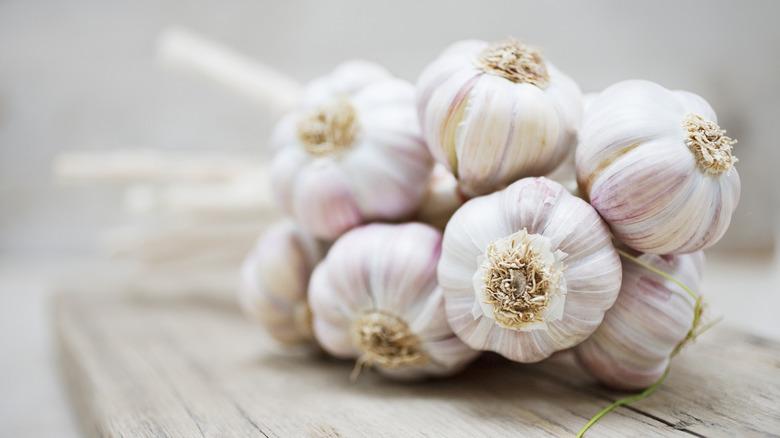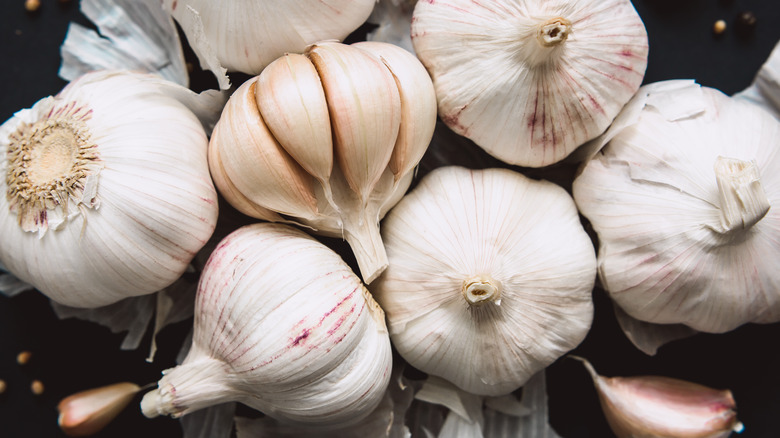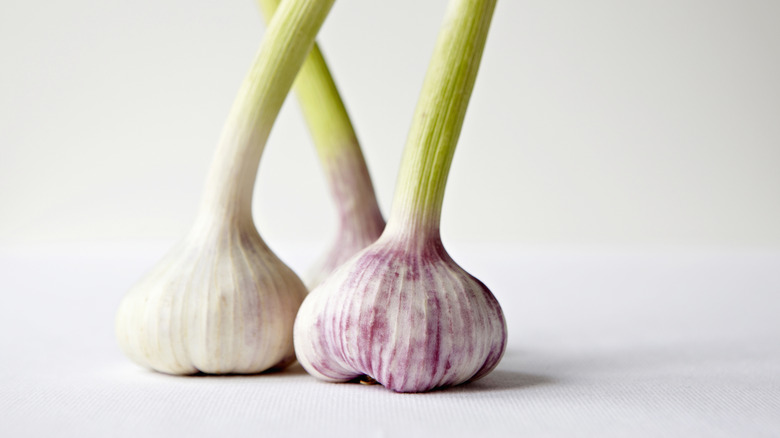How To Tell When Garlic Has Gone Bad
We may receive a commission on purchases made from links.
Garlic is a versatile and flavorful ingredient that is widely used in cooking around the world. It is a member of the allium family, according to ScienceDirect, which also includes onions, leeks, and shallots. Garlic has a strong, pungent flavor that adds depth and complexity to a wide variety of dishes. You can also tame the strong taste of garlic, or you can increase the flavor to meet your own preferences.
One of the most common ways to use garlic is to mince or press it and add it to dishes at the beginning of the cooking process. This allows the garlic to release its flavorful oils and infuse the dish with its distinctive taste. Garlic can also be sliced or chopped and added to dishes later in the cooking process for a more subtle flavor. If you want to cook with garlic, though, it's best to determine if the cloves you are using are still good before you begin adding them to dishes.
Checking your garlic
If you are wondering if your garlic has gone bad, there are a few ways to determine if you can still use the cloves you have. According to Can It Go Bad, garlic has a longer shelf life than most produce items, but when it does start to spoil there are some basic signs, such as dark spots, mold, green sprouts, soft spots, and deep yellowing of color. It can also have an unpleasant smell and a slimy texture.
When cooking with garlic, it's important to use fresh bulbs that are firm to the touch and have tight, unbroken skin, as well as a lighter color. Additionally, you should check all of the cloves in the garlic. Just because one is going bad doesn't mean the whole head of garlic is spoiling. Per Southern Living, you can actually eat garlic that has green growths, but it will taste more bitter, so you won't get the garlicky flavor you may have been hoping for.
Keeping garlic fresh for longer
Of course, you want to avoid truly rotten garlic, because it can cause a specific type of food poisoning called botulism, according to Michigan State University. Eating bad garlic can cause stomach upset, diarrhea, and nausea, in mild cases, in addition to sweats, dry mouth, facial weakness, and blurred vision in more severe cases.
To avoid having rotten garlic, it's best to store it in an open container or a mesh bag that allows air to circulate around the cloves, per Good Housekeeping. And it should be kept at room temperature, away from direct sunlight. MasterClass says that if you have peeled the garlic and need to store the leftover cloves, you can place it in an airtight container and keep it in the fridge for up to two weeks. If you need it to last longer, you can place it in the freezer, where it should stay good for about six months.


